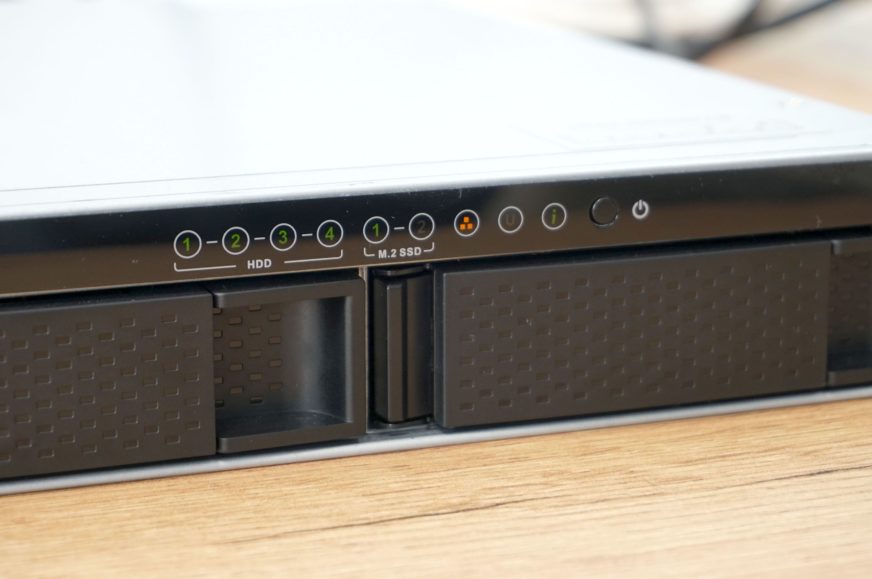Speed test
Network storage is primarily used in enterprises and server farms, but it can also be used in a home. After all, who among us doesn’t have hundreds of photos and videos on our smartphones or cameras. Also not to forget regular backups and external HDDs, which are not really practical in this regard. But what to do if you’re looking for an affordable and quiet NAS, but with premium connectivity and six slots?
Speed test
In the previous chapter, we said that we have installed all three types of supported drives in the NAS – HDD, 2.5″ and M.2 SDD. For each of them, we created a custom volume that will allow us to test read and write performance on each of those drives. This is the simplest form of testing, sometime in the future we may also look at performance when using different RAID types. However, that deserves an article of its own. It’s also important to note that in the practical tests we only used the 10G SFP+ connector, while in the synthetic tests we also tested the 2.5G RJ-45 Ethernet port.
Write: Practical tests
Practical write tests show the expected results – that M.2 NVMe SSDs offer the highest speeds. However, a significant difference can only be seen with the largest 9 GB file, where it is up to three times faster. With smaller sizes, the difference compared to the 2.5″ SATA SSD shrinks to 5 to 20%. The HDD is the slowest and only comes close to the rest of the drives with the smallest 427–1235 kB and 12–59 kB files.
Write: Synthetic tests
Synthetic write tests show similar results to the practical ones, but this time the SATA SSD also achieved higher speeds at the limit of the drive itself and the SATA interface. You can also notice how the connection used – SFP+ or RJ-45 affects the speed. The slower 2.5G ethernet slows down both SSD types considerably, but especially during sequential writes. For smaller files, the drive itself is already the limiting factor and not the interface.
Read: Practical tests
Practical read tests show minor differences between M.2 and SATA SSDs, but the trend is almost identical. NVMe offers the highest speeds of the available interfaces, although it is still severely limited due to the availability of only one PCIe 3.0 lane per drive.
Read: Synthetic tests
The synthetic read tests are interesting, as virtually all drives performed equally in them, which is really a surprise. Especially for HDDs, where we haven’t seen such big numbers in sequential reads so far. So these tests rather better illustrate for us the difference between 2.5G and 10G connections, which is almost double in the sequential tests, although theoretically it should be up to four times as much. However, we would need a faster M.2 interface for that.
Power draw
We measure the power draw with a new methodology using a UNI-T UT71E multimeter. The measurement was carried out during the whole testing, which lasted several hours. During that time, the average power draw was stable at 27 W and rarely exceeded 30 W. With inactive drives it drops down to 14 W. Even at full load, the fans are not very audible and only make the biggest noise at boot, when power draw jumps to 46 W. These results only confirm my assumptions that thanks to the ARM processor used, the operation will be very quiet and low-power.








